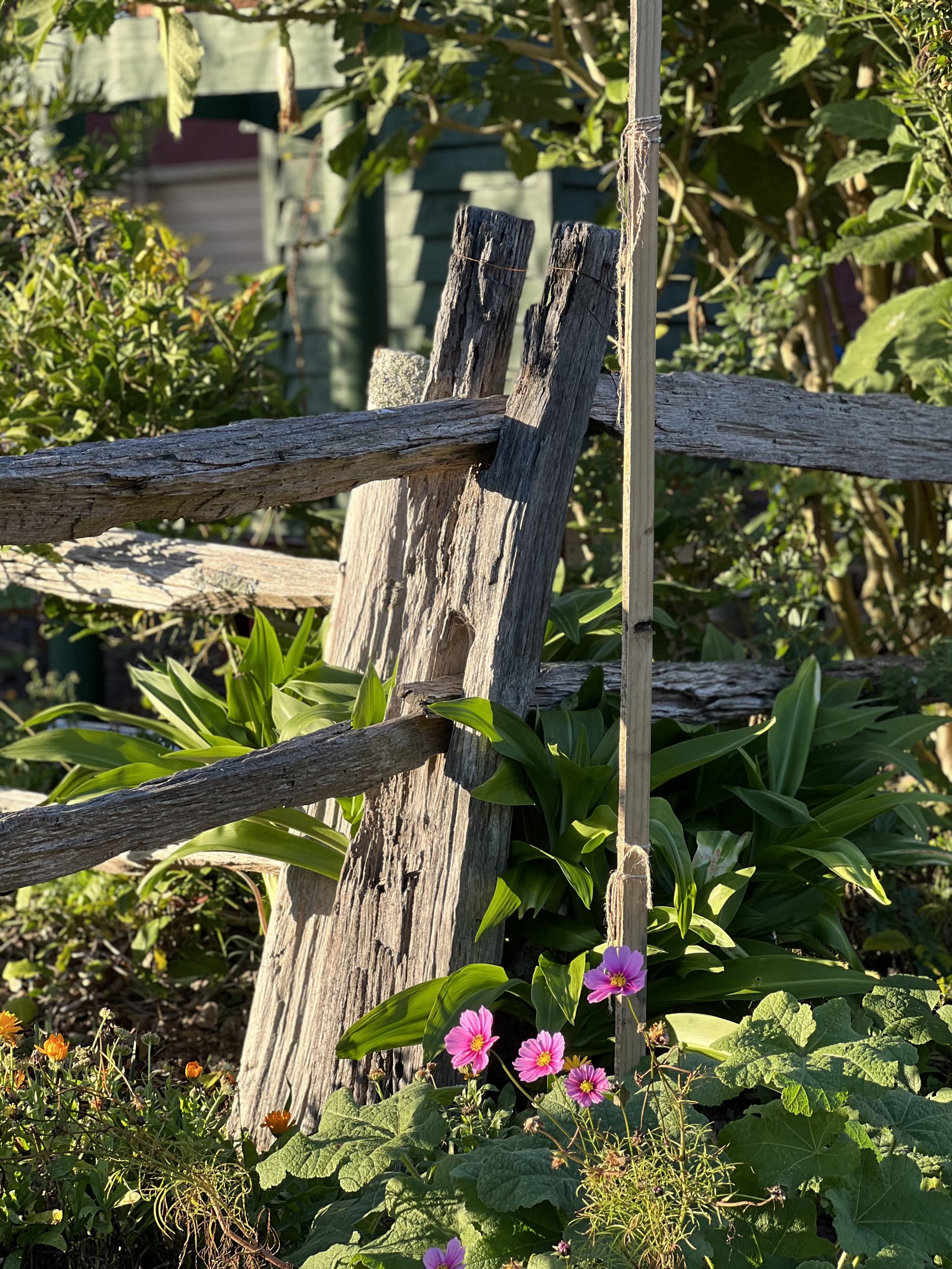
Luke’s Corner
Heritage Gardening at the Village
Eco-friendly fertilizing tips
Plant some comfrey. You can use it’s leaves as a nutrient rich mulch or make comfrey tea a liquid fertilizer full of nitrogen and potassium. Be wary though it clumps, and it has long tap roots.
Make fertilizer tea from your weeds. Recipes are all over the internet to read and research! There is so much information out there these days and don’t be afraid to experiment.
Compost yourself! Not exactly a groundbreaking one but there are ways to make it more space and time efficient. Check out compost collectives bokashi composting information.
.Save those falling leaves. Make yourself a leaf bin and let them rot down for about a year. It makes awesome soil conditioner and mulch.
Try adding mycorrhizal fungi into planting or composting practices. This stuff can work wonders for your soil and plant root health.
Mulch! With compost, woodchips, or pea straw. Create that humus layer at the top of your soil profile.

“Don’t be afraid to leave messy corners because sometimes environmentally friendly may not mean aesthetically pleasing. Get creative! Personally I think that the more life you have in a garden the healthier it is.”
— Luke Southern | Heritage Gardener
Eco-friendly weed-killing tips
Cover and smother: Smother with cardboard, newspaper, or mulch. Covering the weeds up stops them from getting the sunlight they need to survive. If you go the mulching route, it takes a layer of about 5cm to bury them deep enough to kill them.
Boiling water: Pour it directly on your weeds. Make sure you don’t touch any of your plants though this will cook them to.
Homemade organic weedkillers: Recipes are all over the internet if you want to keep away from glyphosate. You can also get some at local garden shops and hardware warehouses. Be wary though - it can be expensive.
Good, old-fashioned weeding: You can be more efficient about it by picking the moments when your soil is wet enough to get all those roots out. Dead head weeds and come back later if you are struggling to dig them out of dry soils.
Tips & Tricks: Being water-efficient in your garden
-
Try Ollas. Ollas are unglazed terracotta vessels that you bury in the ground next to your new plantings. All you have to do is fill them full of water every couple of days. Your plants should suck the water from the clay walls of the Olla when needed. This limits evaporation and makes the water directly accessible to your plant’s roots. You even make them yourself from terracotta pots you can purchase at the local store.
-
Water less frequently but deeper and into base of plant. This promotes deep root growth and reduces things like humidity and sun burn on the leaves of the plant which could scorch leaves or more readily attract pests or diseases. The result; a more robust plant. I will usually water vegetables 3 times a week in the summer. This does depend on what you're trying grow and what stage of life the plant is at. For example, with seedlings and new plantings you will want to water them at least once every two days for the first couple of weeks.
-
Mulch! It is common knowledge that mulch helps with soil moisture retention and reducing soil surface evaporation. But, this goes for organic matter in general so it might be a good idea to dig some in before planting up. Mulch layers should be about 5cm to 7cm.
Remember not pile it up against the stem of your plants as this may cause rot. It’s also a good idea give the garden a soaking after you’ve finished mulching as this helps to stop it from blowing away and makes it harder for those pesky birds (chickens and Pukekos in our case) to get into.
-
If you want to be a bit more systematic about watering, observation is your best friend. The easiest way to check the moisture levels is either with your finger. Simply poke your finger into the soil a cm into if its dry go another cm deeper and of that’s dry you may want to do some watering. You can also do this with a wooden dowel. Same process applies except you are looking to see if any soil clings to the wood - if the soil does, it is moist.
Thinking ecologically in the garden
Ways you can start to think like a eco-friendly gardener
Soil & Climate
Think about your local soil conditions and climate. This should be your number one guide to the plant makeup of your garden. To many times we focus on what we want rather then what will thrive. Eco gardening is about working with what you have and recycling as much as possible. If you are looking to be more eco-minded, have a think about the plants you have and how many resources you are using to keep them alive. If you need to water something every day or a plant is in constant need of attention, it’s just not the right plant for the right place.
Plant with Ecology in Mind
Plant and plan with ecology in mind. Are you trying to attract more insects, birds, or lizards into your garden? You can adapt your planting to target your guests. Are you looking to reduce the number of fertilizers or pesticides you use? It’s also important to think beyond plant selection and think about the kind of habitats and landscapes the animals inhabit. Don’t be afraid to leave messy corners because sometimes environmentally friendly may not mean aesthetically pleasing. Get creative! Personally, I think that the more life you have in a garden the healthier it is.
Pest & Management Habits
Change your pest and disease management habits. Ideally spraying chemicals should be your last course of action. First and foremost a healthy plant is less likely to be infested or infected. Look at these tips!
Soil health is key to plant health. This is not limited to the physical elements of soil (structure, nutrients, and drainage etc.). The living parts of the soil (microbes, fungi, and soil dwellers) are becoming increasingly important in horticultural thought. Think about how you can make your soil alive and the impacts your sprays may have on soil health.
Let the ecology of your garden do some of the work for you. Attract those beneficial insects to keep down those pests. You can even buy colonies of things like ladybirds to populate garden.
Plant diversity will limit the impact of disease on your plants. Mono-cultures are breeding grounds for disease.
If you do want to spray in an eco-friendlier way monitoring is key. To many times we get stuck in the habit of spraying every two weeks no matter what. The other option is to check your plants before spraying. You may not even have to spray them. It might take a bit of washing and squishing or judicious leaf pruning. A good place to start is integrated pest management!

